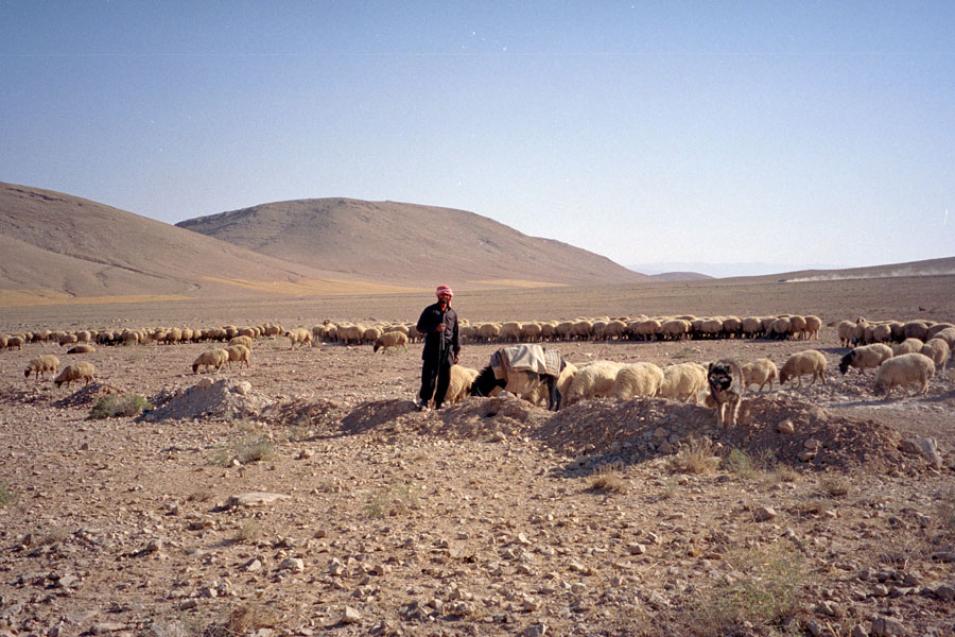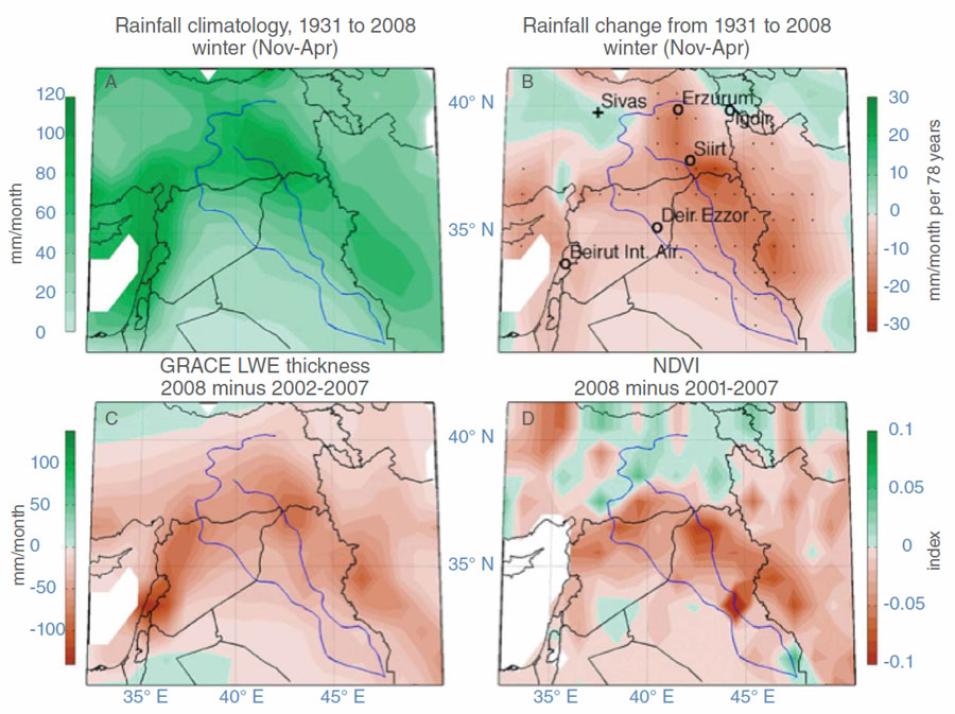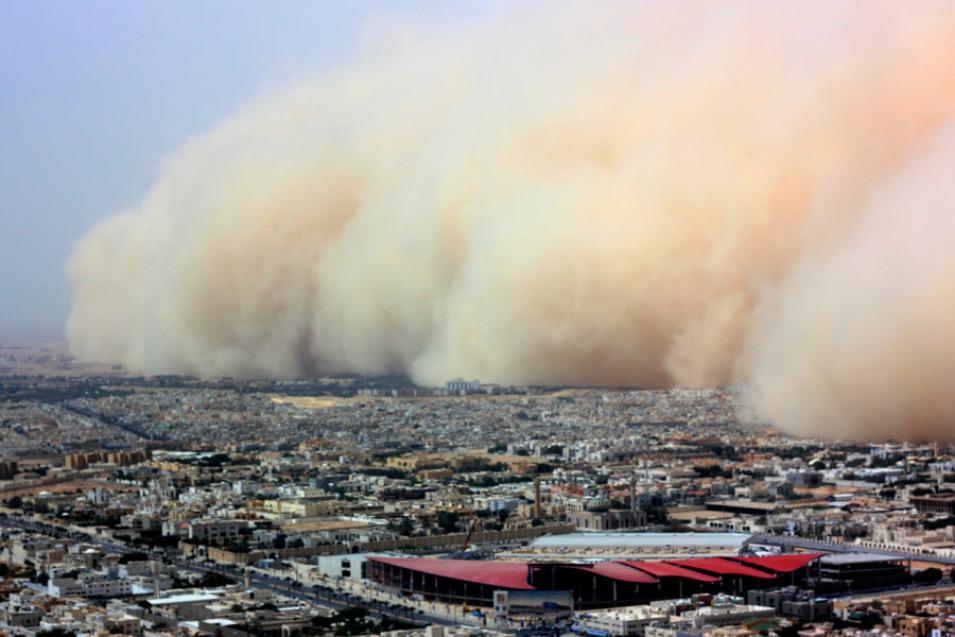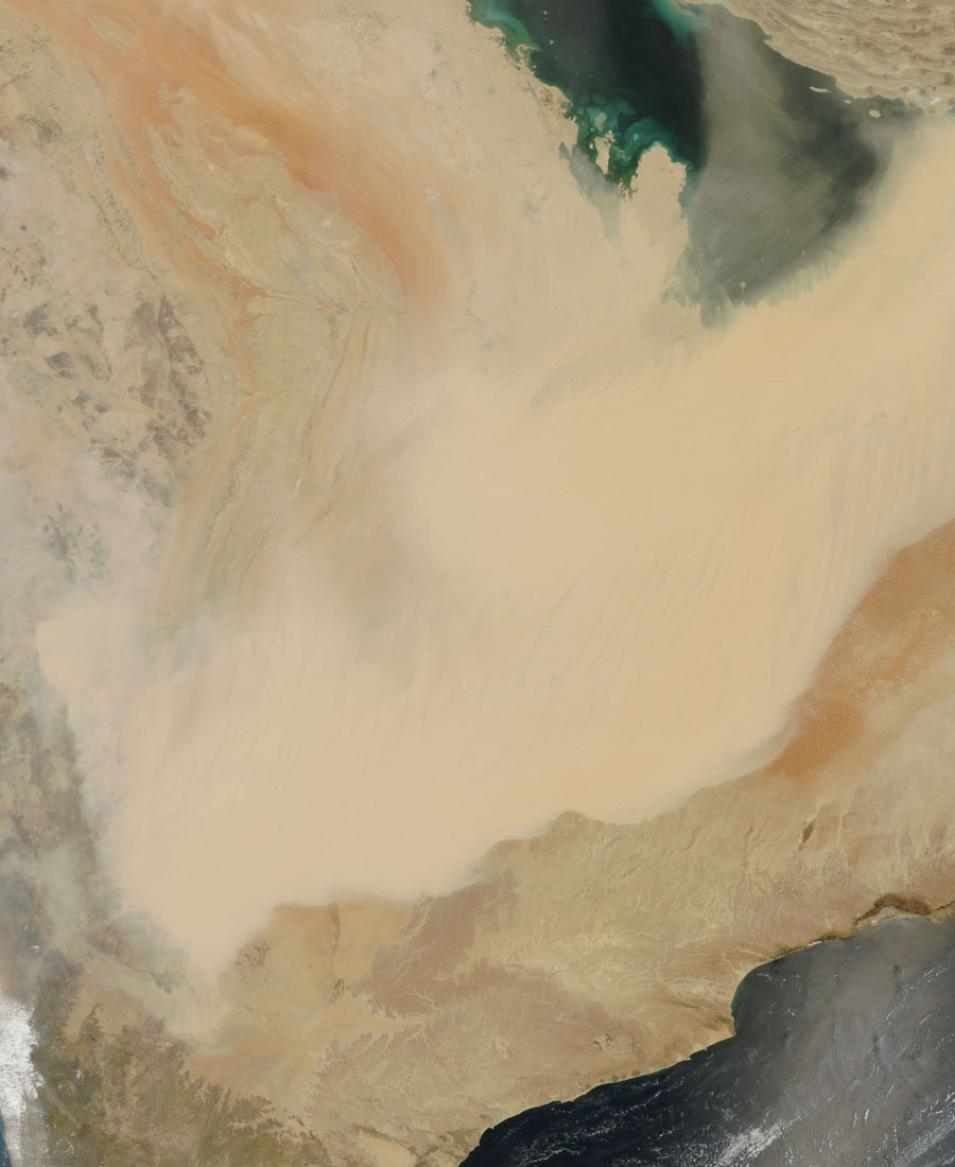References
Global Modeling and Assimilation Office (GMAO). NASA Modern Era Retrospective-Analysis for Research and Applications (MERRA). Goddard Earth Sciences Data and Information Services Center (GES DISC), Greenbelt, MD, USA.
Kelley, C. P., S. Mohtadi, M. A. Cane, R. Seager, and Y. Kushnir. 2015. Climate change in the Fertile Crescent and implications of the recent Syrian drought. Proceedings of the National Academy of Sciences of the United States of America 112(11): 3,241–3,246. doi:10.1073/pnas.1421533112
Levy, R., Hsu, C., et al., 2015. MODIS Atmosphere L2 Aerosol Product. NASA MODIS Adaptive Processing System (MODAPS), Goddard Space Flight Center, USA. doi:10.5067/MODIS/MOD04_L2.006
MISR Science Team (2015), Terra/MISR Level 3, Component Global Aerosol Monthly, version 4, Hampton, VA, USA: NASA Atmospheric Science Data Center (ASDC). doi:10.5067/Terra/MISR/MIL3MAE_L3.004
Didan, K. 2015. MODIS Vegetation Indices Monthly L3 Global 0.05Deg CMG. NASA EOSDIS Land Processes DAAC (LP DAAC), USGS Earth Resources Observation and Science (EROS) Center, Sioux Falls, SD.
Notaro, M., Y. Yu, and O. V. Kalashnikova. 2015. Regime shift in Arabian dust activity, triggered by persistent Fertile Crescent drought. Journal of Geophysical Research: Atmospheres 120: 10,229–10,249. doi:10.1002/2015JD023855
Swenson, S.C. 2012. GRACE monthly land water mass grids NETCDF Release 5.0 NASA Physical Oceanography DAAC (PO.DAAC), CA, USA. doi:10.5067/TELND-NC005
Vose, R. S., R. L. Schmoyer, P. M. Steurer, T. C. Peterson, R. Heim, T. R. Karl, and J. K. Eischeid. 1998. Global Historical Climatology Network, 1753–1990. NASA Oak Ridge National Laboratory (ORNL) DAAC, Oak Ridge, TN, USA. doi:10.3334/ORNLDAAC/220
For more information
NASA Atmospheric Science Data Center (ASDC)
NASA Goddard Earth Sciences Data and Information Services Center (GES DISC)
NASA Land Processes Distributed Active Archive Center (LP DAAC)
NASA Level 1 and Atmosphere Archive and Distribution System DAAC (LAADS DAAC)
NASA Oak Ridge National Laboratory DAAC (ORNL DAAC)
NASA Physical Oceanography DAAC (PO.DAAC)
NASA Gravity Recovery and Climate Experiment (GRACE)
NASA Multi-angle Imaging Spectroradiometer (MISR)
NASA Moderate Resolution Imaging Spectroradiometer (MODIS)
Global Historical Climatology Network (GHCN)
NASA Modern-Era Retrospective Analysis for Research and Applications (MERRA)
| About the remote sensing data |
|---|
| Satellites | Terra | Terra and Aqua |
| Sensors | Multi-angle Imaging Spectroradiometer (MISR) | Moderate Resolution Imaging Spectroradiometer (MODIS) |
| Data sets | MISR Component Global Aerosol Product | MODIS Aerosol Product (MOD04_L2 and MYD04_L2) |
| Resolution | 0.5 degree x 0.5 degree grid | 10 x 10 1-kilometer pixel array |
| Parameters | Aerosol optical depth | Aerosol optical depth |
| DAACs | NASA Atmospheric Science Data Center (ASDC) | NASA Level 1 and Atmosphere Archive and Distribution System Distributed Active Archive Center (LAADS DAAC) |
| About the data |
|---|
| Platforms | Temperature, sea level, and pressure stations | |
| Data sets | Global Historical Climatology Network, 1753-1990 | NASA Modern Era Retrospective-Analysis for Research and Applications (MERRA) |
| Resolution | | 0.5 degree x 0.66 degree grid |
| Parameters | Temperature, precipitation, sea level pressure, and station pressure | 850 hPa v-wind, humidity and 500 hPa vertical motion |
| DAACs | NASA Oak Ridge National Laboratory Distributed Active Archive Center (ORNL DAAC) | NASA Goddard Earth Sciences Data and Information Services Center (GES DISC) |




